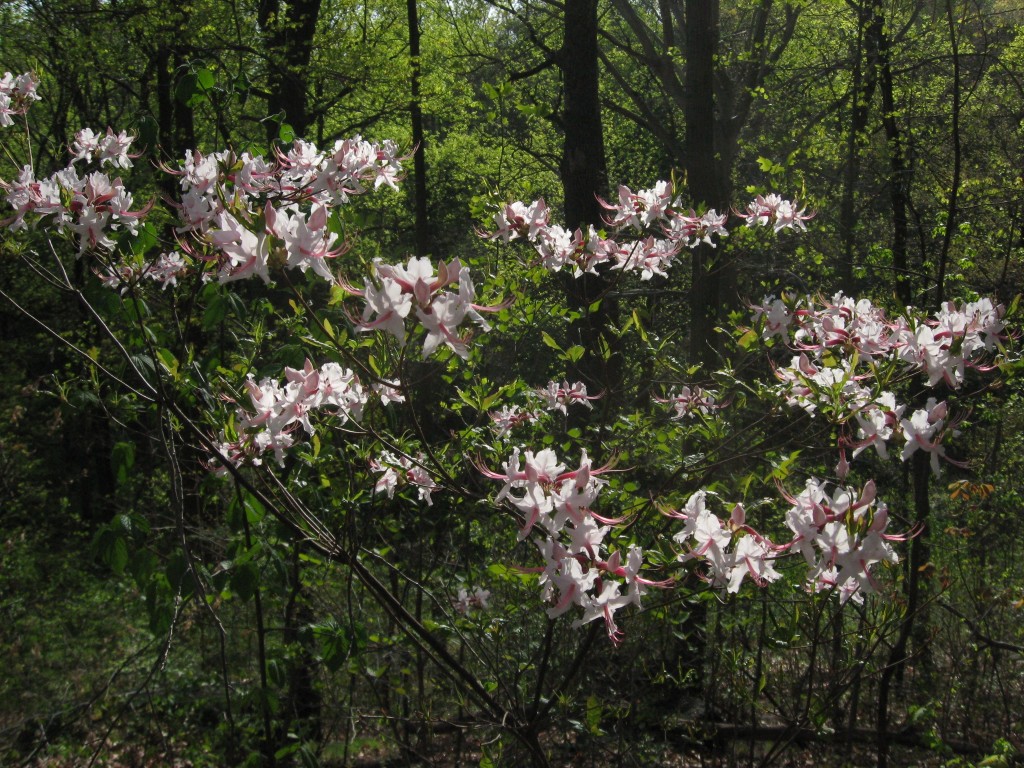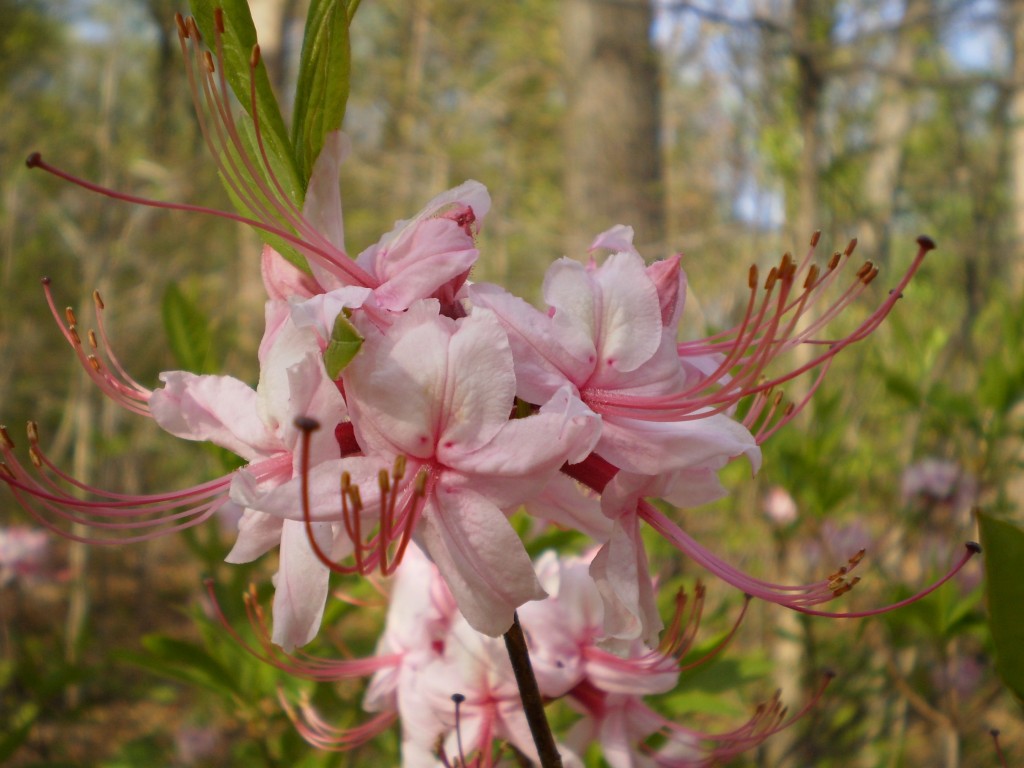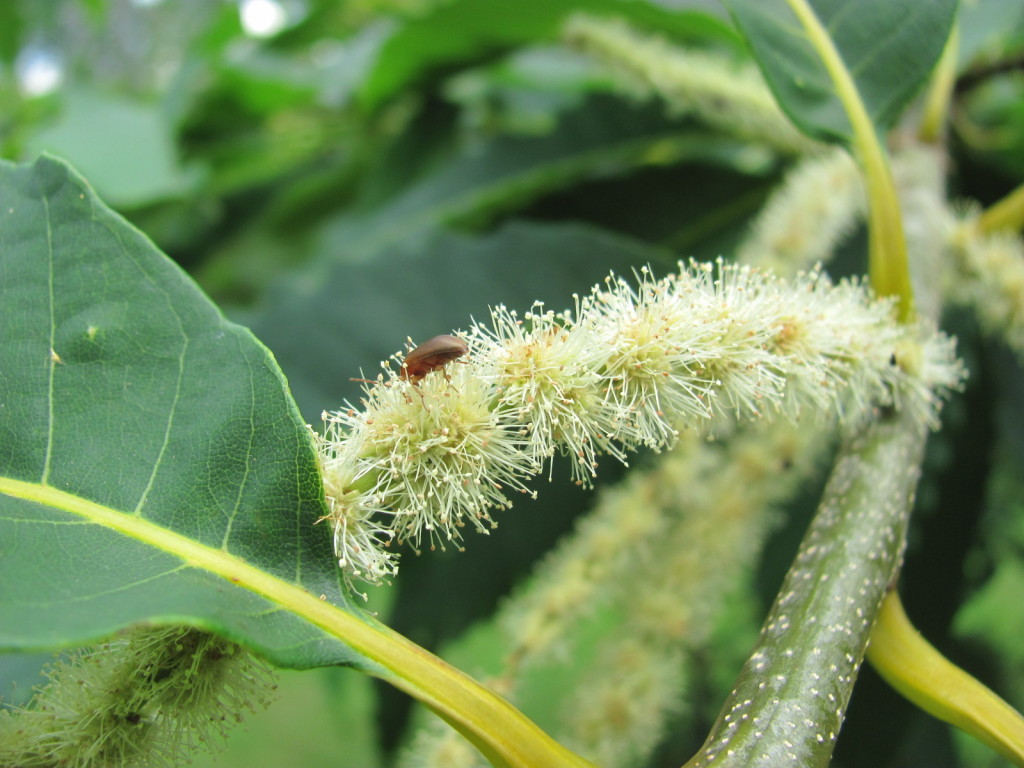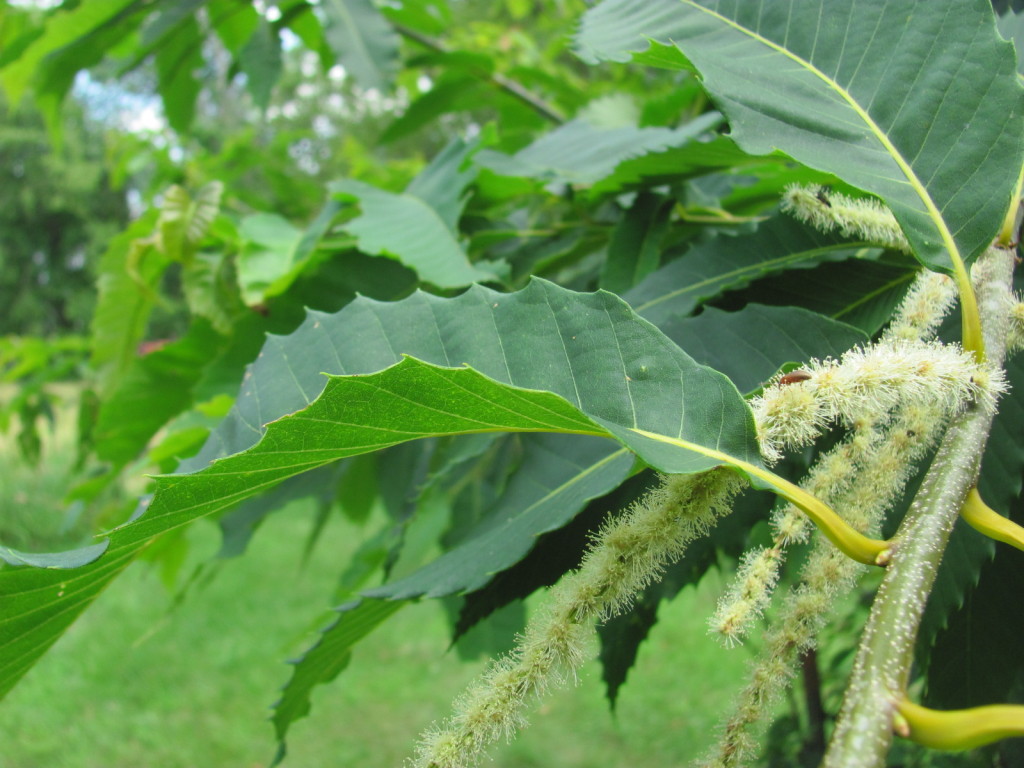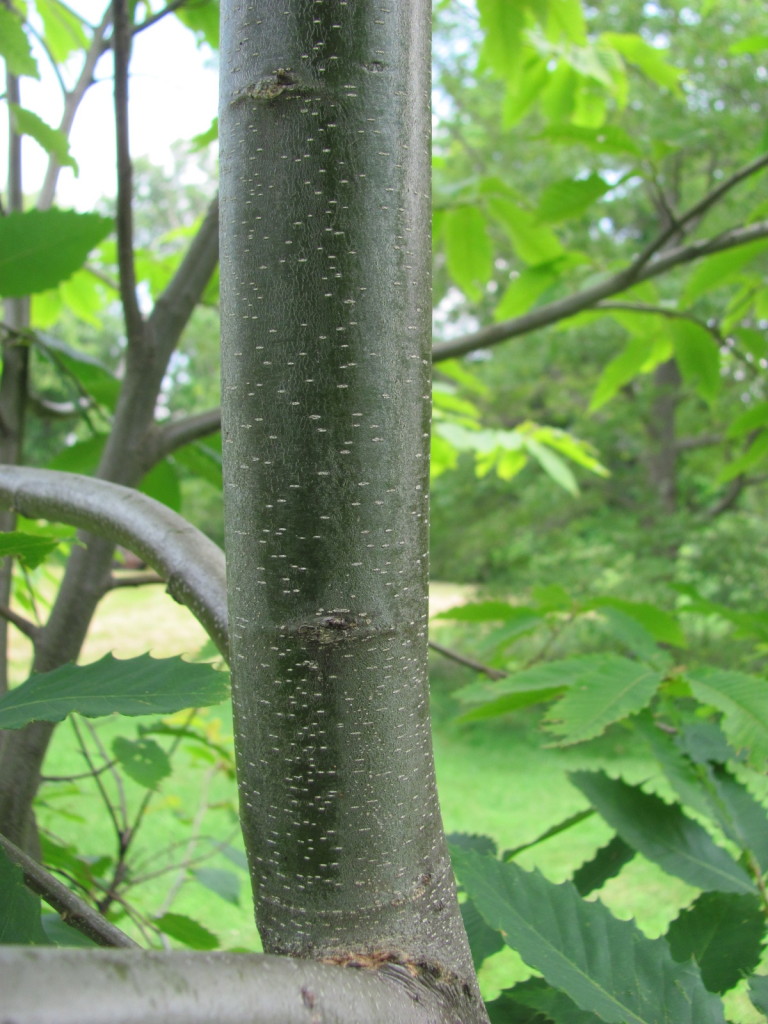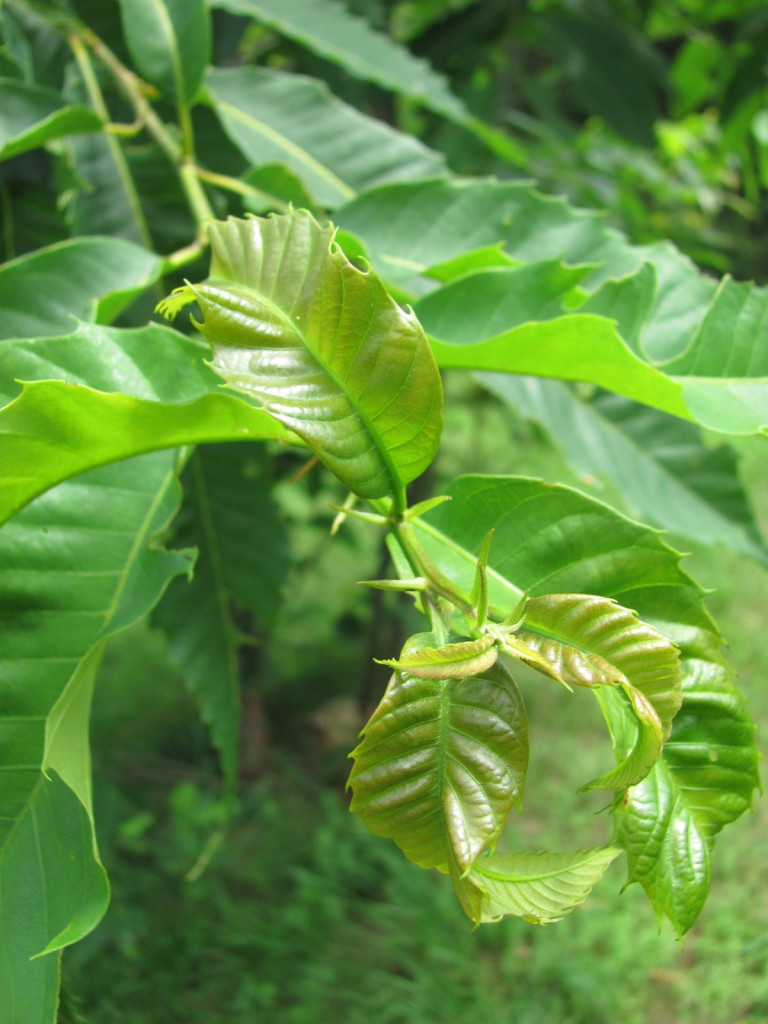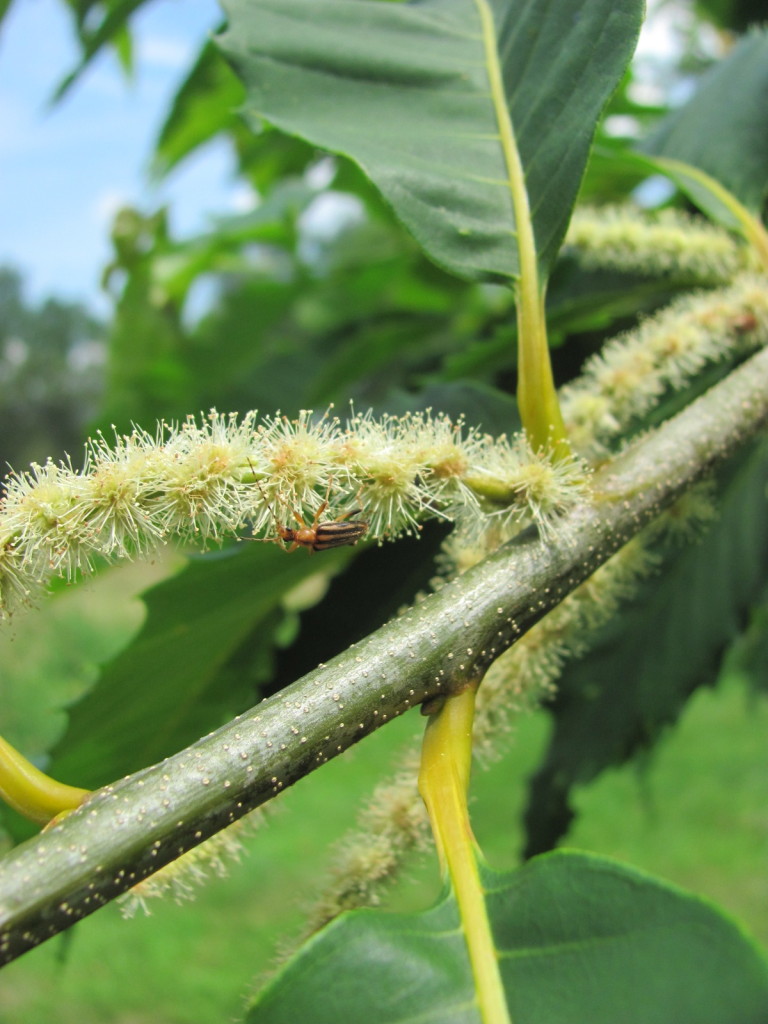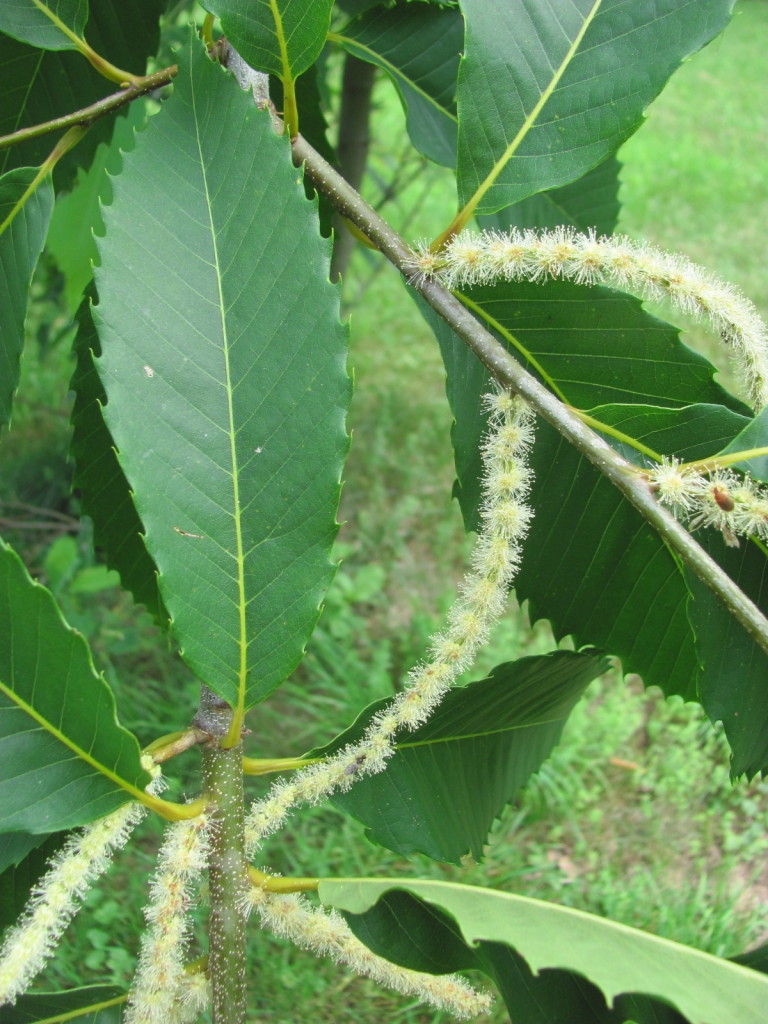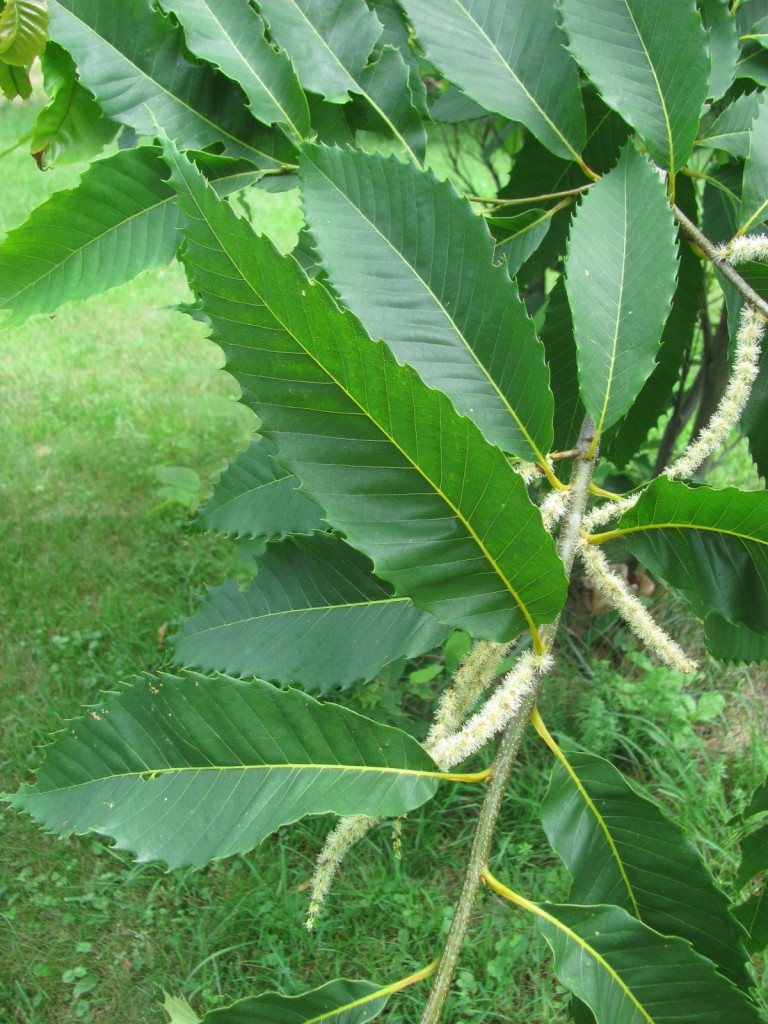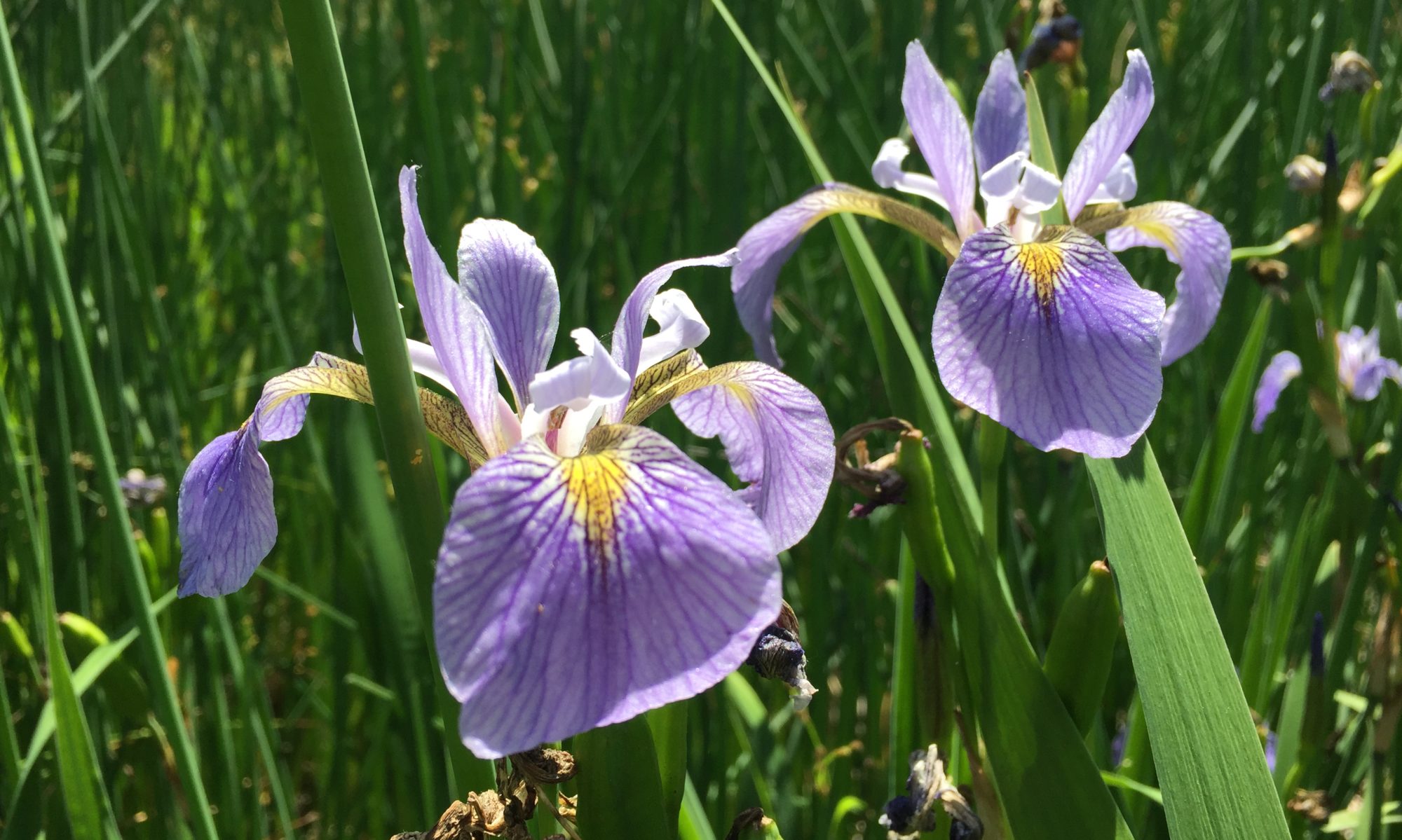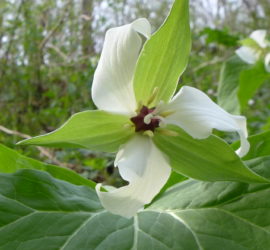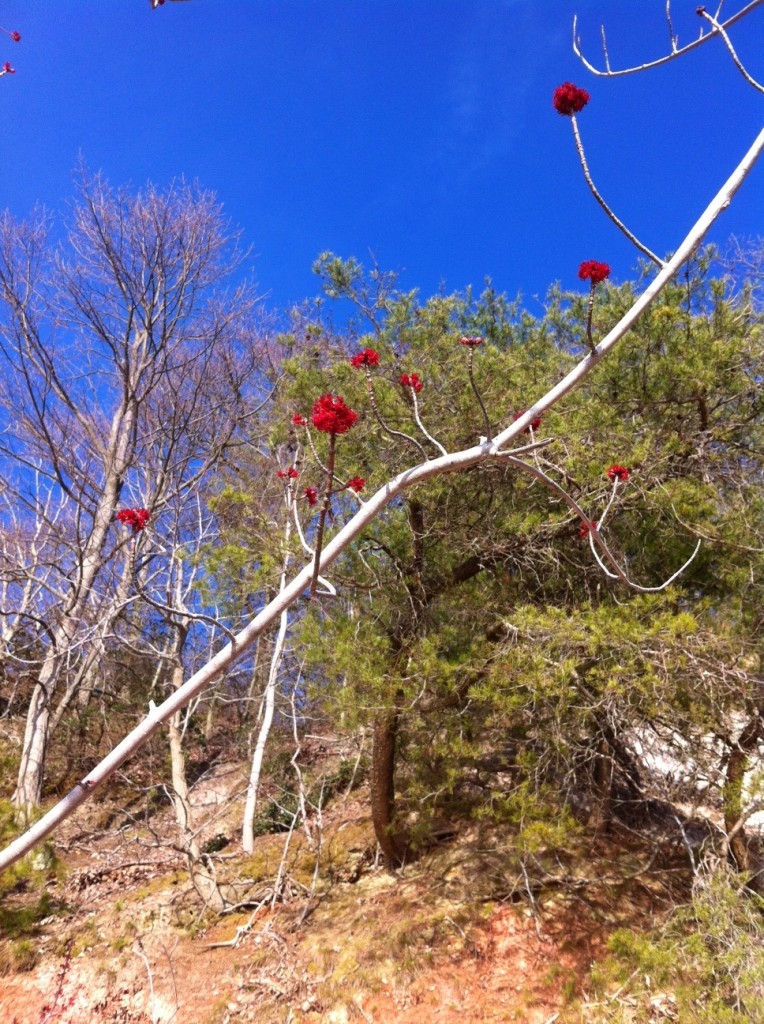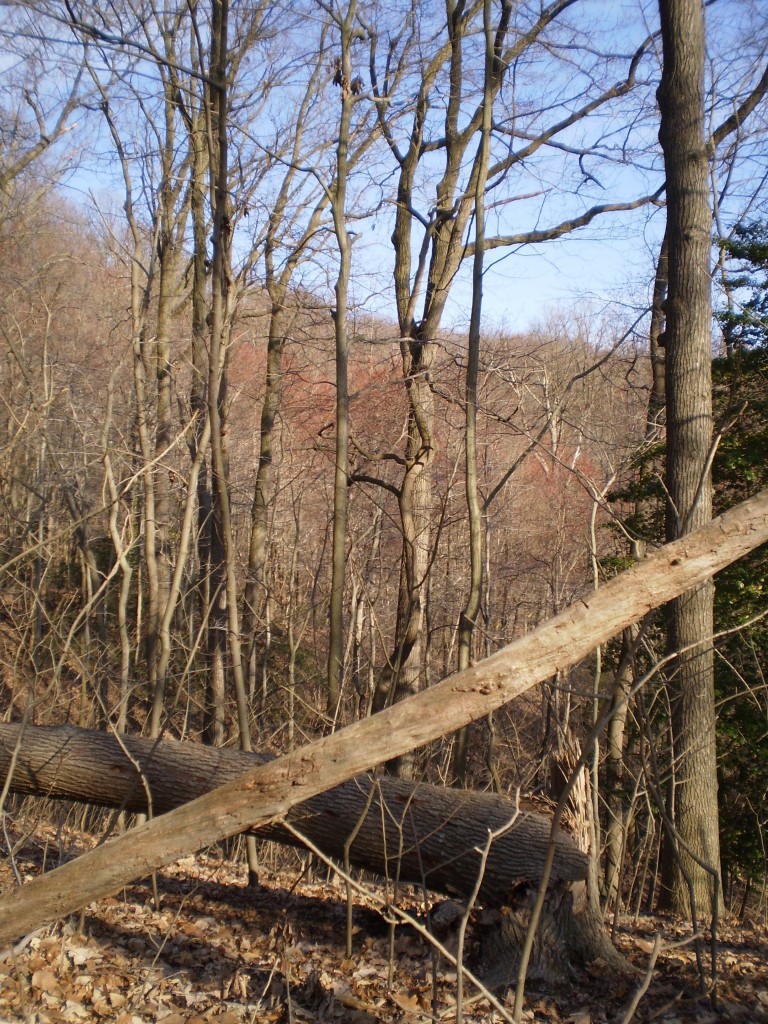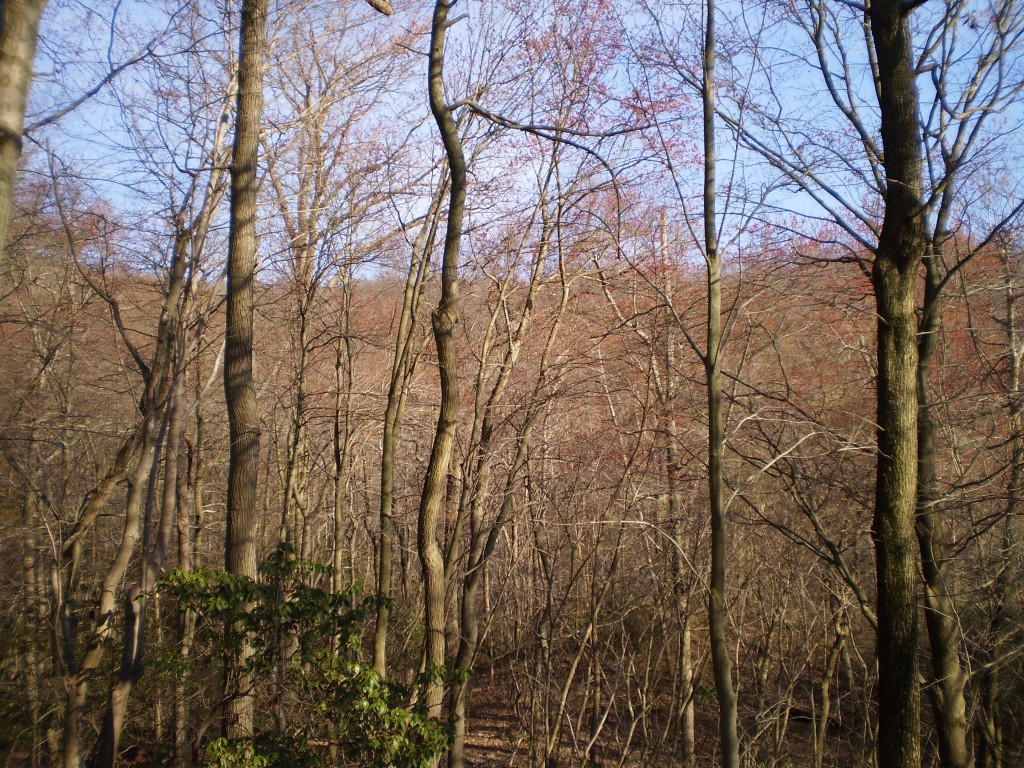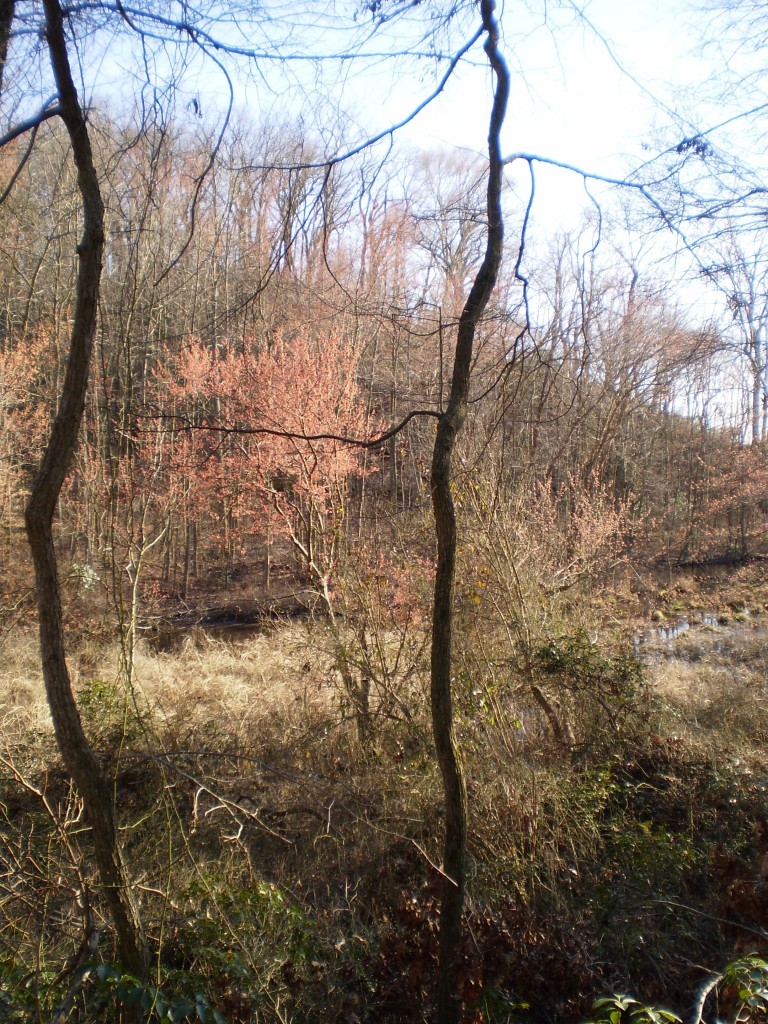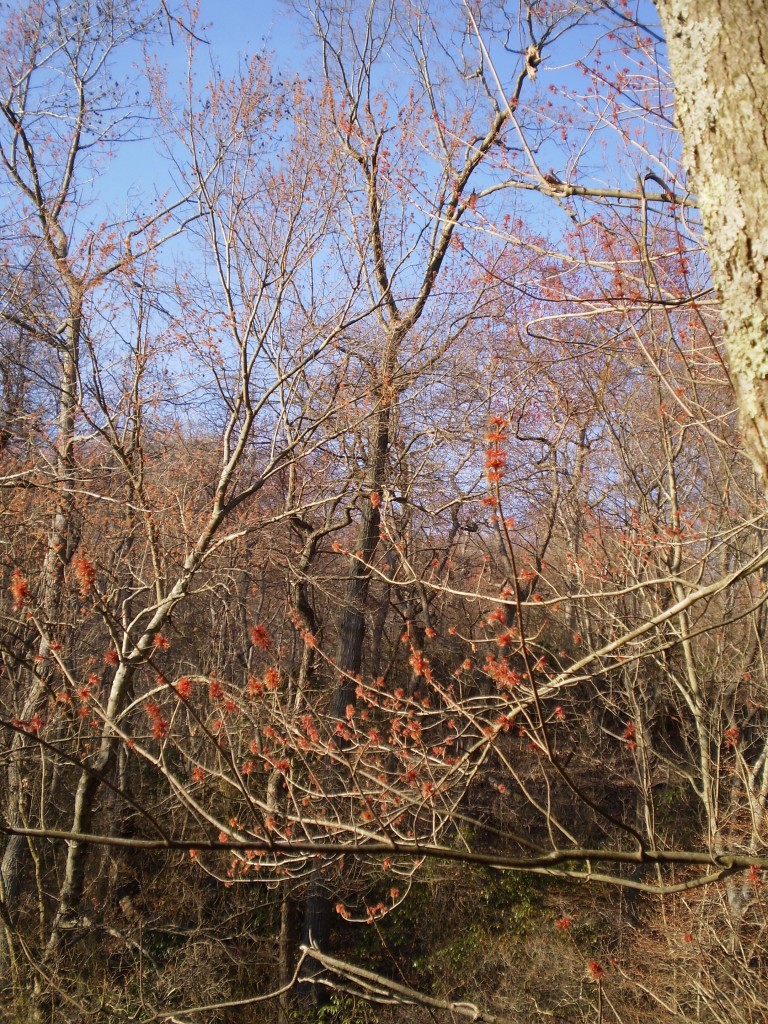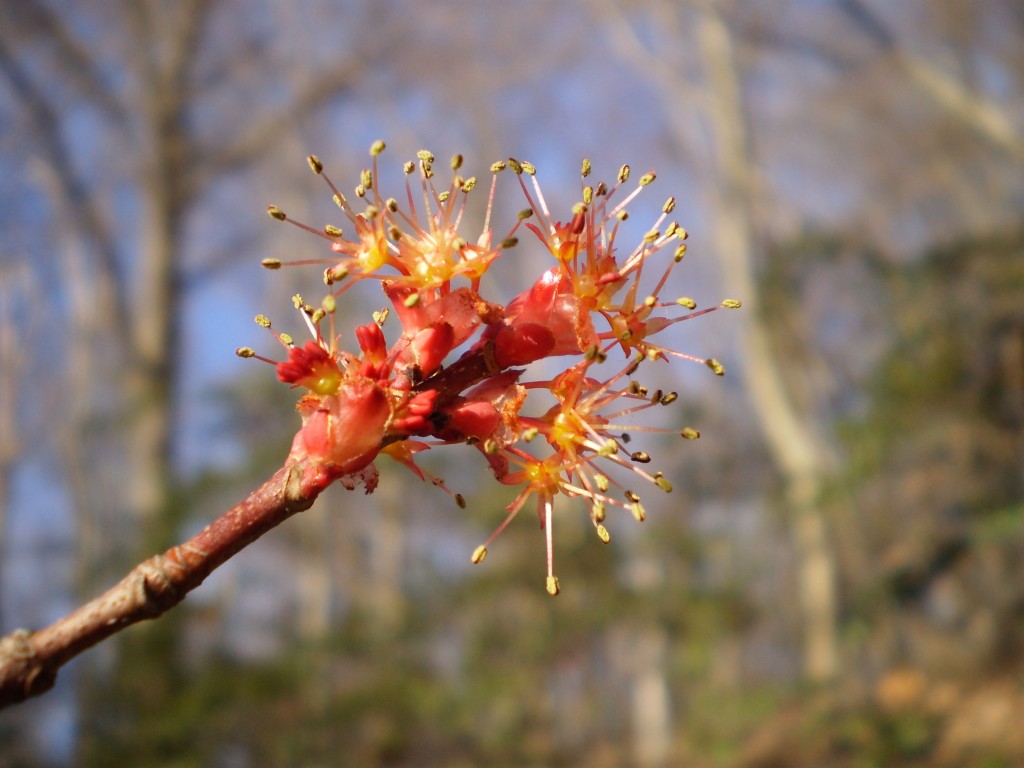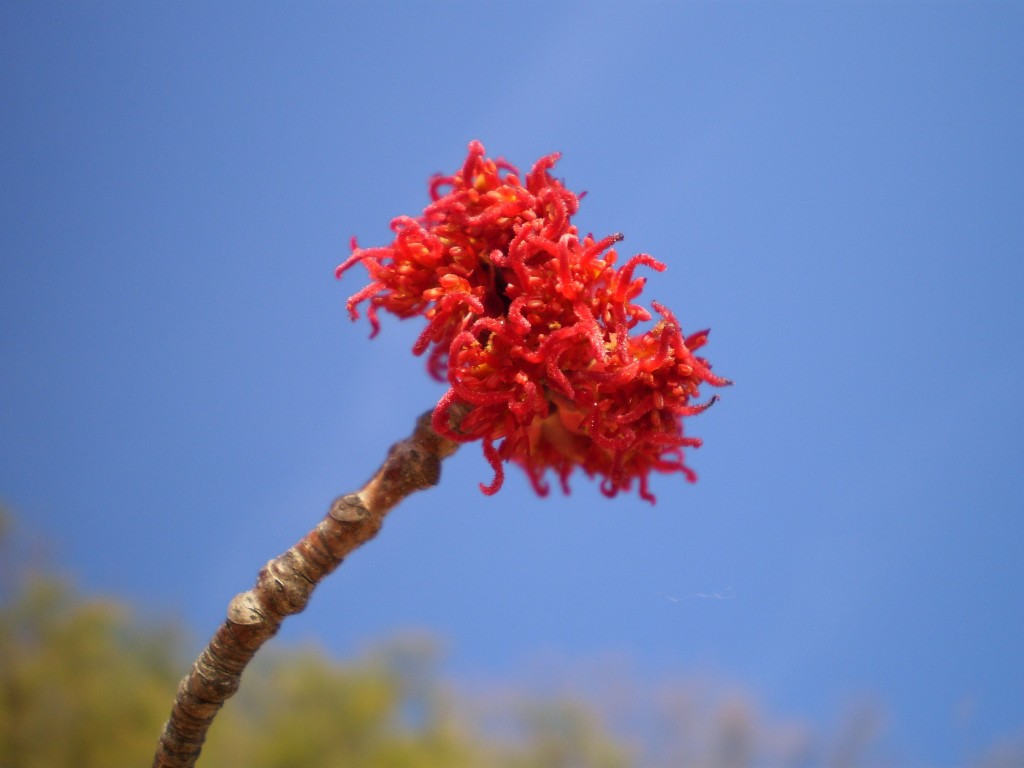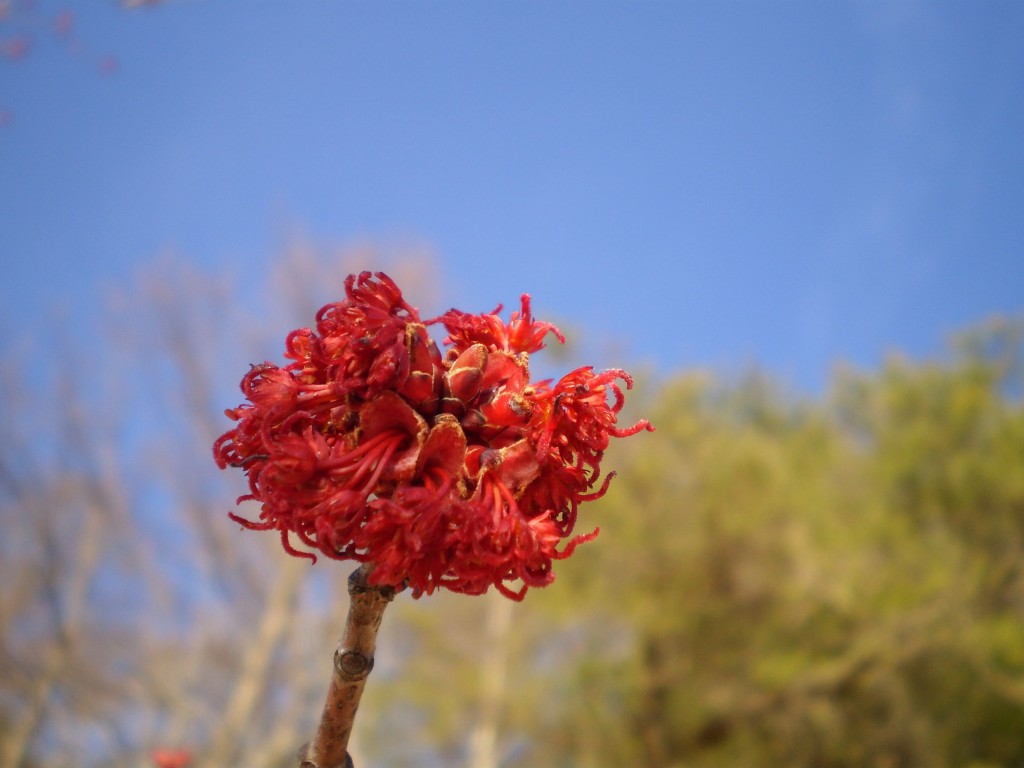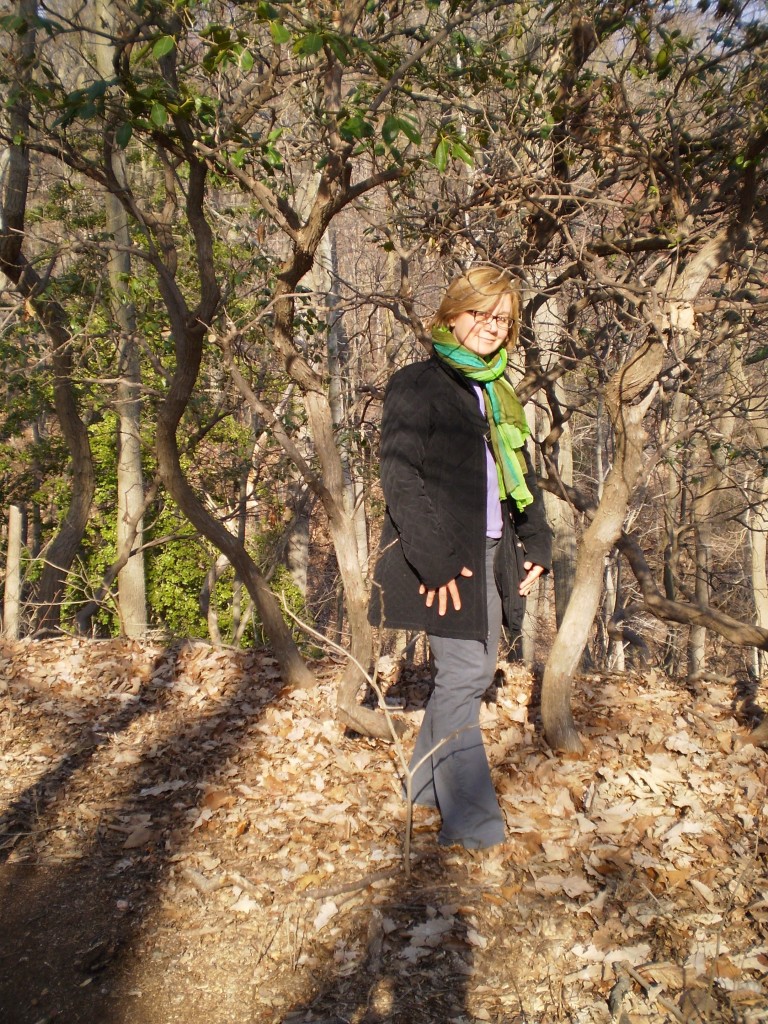Winter 2012 -2013 has been so far snowless in Philly. A few inconsequential dustings…
The dead leaves on the ground have been a prominent feature of the landscape. Â This has been a great time to examine and review the bark and trunks of trees and the growth habit of shrubs and trees, the bones of the forest landscape. The light of winter is also a fine and exhilarating medium to explore, comprehend and appreciate, first through our own eyes, and then through our cameras, so we can share the visual experience and repeat it if we desire. Â The winter’s light is something we have looked forward to, and gotten used to and now we are starting to think about the changes ahead.
These are just a few of the places and times that stand out in our anticipation of Spring that we will outline for you here:
THE BLOODROOT IN MORRIS PARK
On March 21st, 2013, we are anticipating the big change, where the winter’s light is suddenly gone, and is replaced by the light of spring. Â The mood of the forest changes, in some instances subtlety, and on some days around the equinox, the changes are dramatic.
Our favorite change is the Bloodroot flower, which emerges on the Spring Equinox in Morris Park like a clock. It is easily missed among the sun-bleached leaves in the afternoon early spring light. Â These next few pictures are from early springs past, 2011 and 2012:
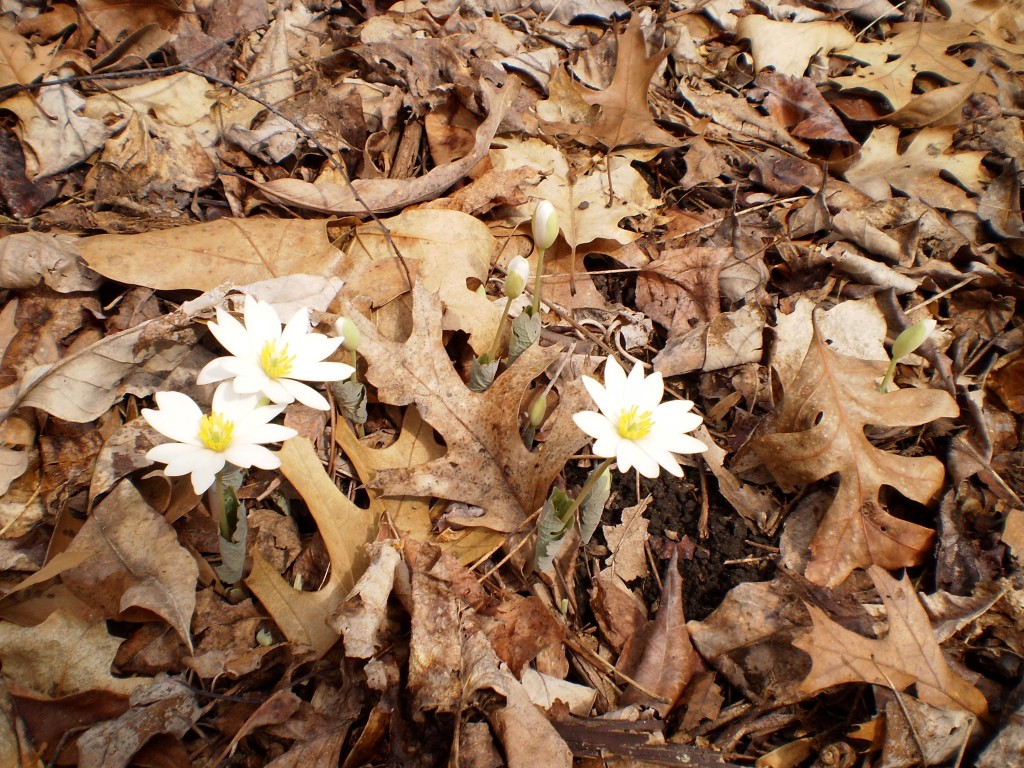
However if the colonies are big enough, as they have been in Morris Park, than the pure white flowers of Bloodroot stand out in the early spring afternoon (these flowers tend to stay closed in the morning). A nice sunny afternoon in the last week of March and early April is the best time to visit.
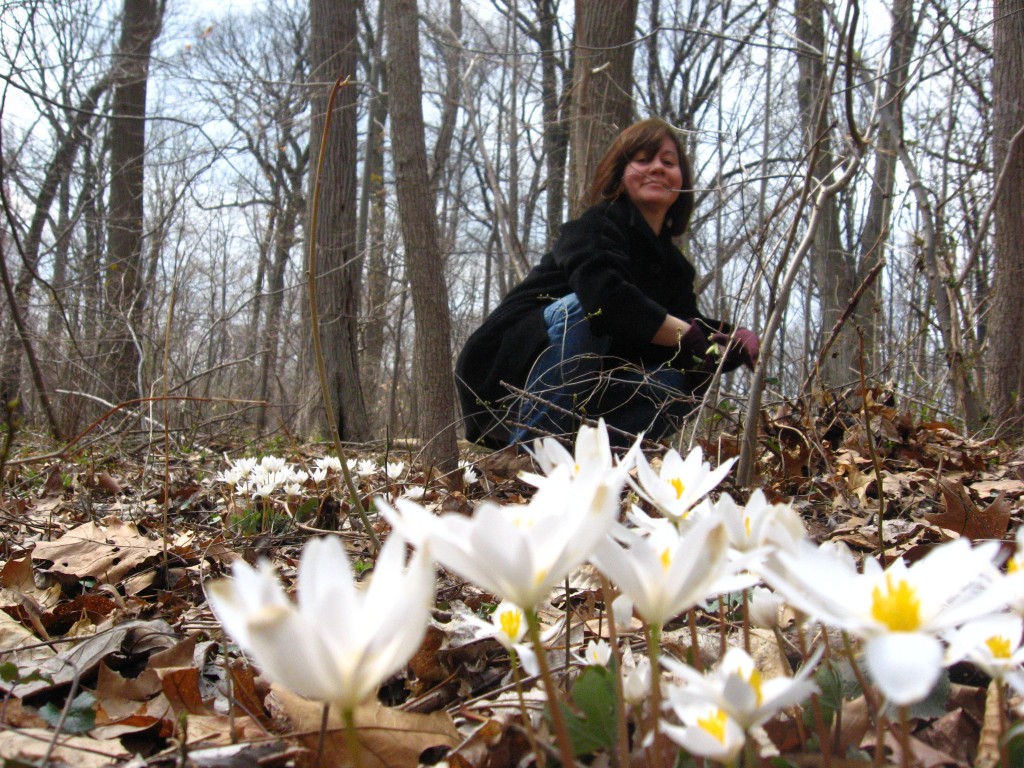
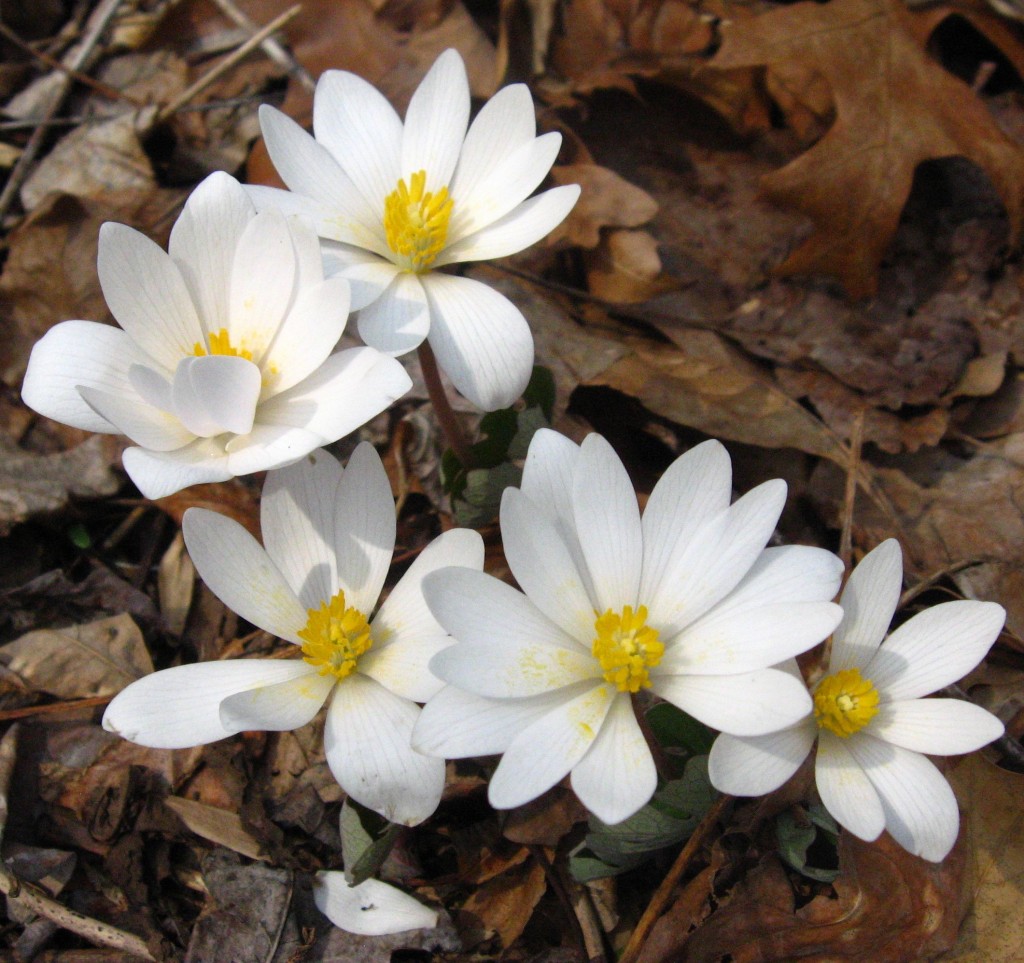 The flowers are swarmed by the bees, which spread the pollen right away. The yellow stains on the middle flower, pictured above exemplify this.
The flowers are swarmed by the bees, which spread the pollen right away. The yellow stains on the middle flower, pictured above exemplify this.
THE OAK TREES OF MORRIS PARK
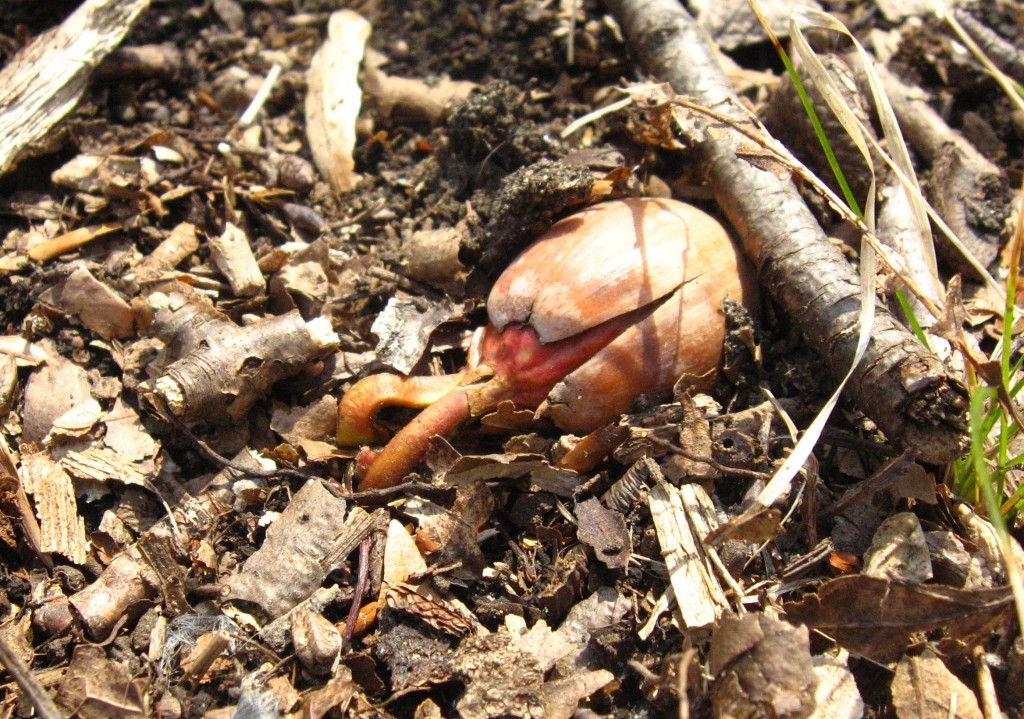 This acorn, pictured above is the future of the forest. We try to control the invasives every winter in the holes in the forest canopy. This is an encouraging scene depicting an acorn in Morris Park that has germinated and is trying to root itself, right in an area that was infested with multiflora rose and Japanese honeysuckle, which we had removed! So far, every area that was infested with Multiflora Rose and Japanese honeysuckle (with no seedling trees) where we had simply removed the invasives, now has trees growing in that area! We have had to return multiple times every year in a follow-through maintenance effort (often weekly), removing emerging invasives in these areas. This Spring we look forward to watching the trees germinate and grow in the areas we have removed invasives this winter.
This acorn, pictured above is the future of the forest. We try to control the invasives every winter in the holes in the forest canopy. This is an encouraging scene depicting an acorn in Morris Park that has germinated and is trying to root itself, right in an area that was infested with multiflora rose and Japanese honeysuckle, which we had removed! So far, every area that was infested with Multiflora Rose and Japanese honeysuckle (with no seedling trees) where we had simply removed the invasives, now has trees growing in that area! We have had to return multiple times every year in a follow-through maintenance effort (often weekly), removing emerging invasives in these areas. This Spring we look forward to watching the trees germinate and grow in the areas we have removed invasives this winter.
SHENKS FERRY WILDFLOWER PRESERVE
We visit this site along the Susquehanna River in early to mid April to see the most elaborate display of wildflowers bloom. Isabelle, pictured below is very content among the Phlox, Bluebells, Trilliums and Mayapples.
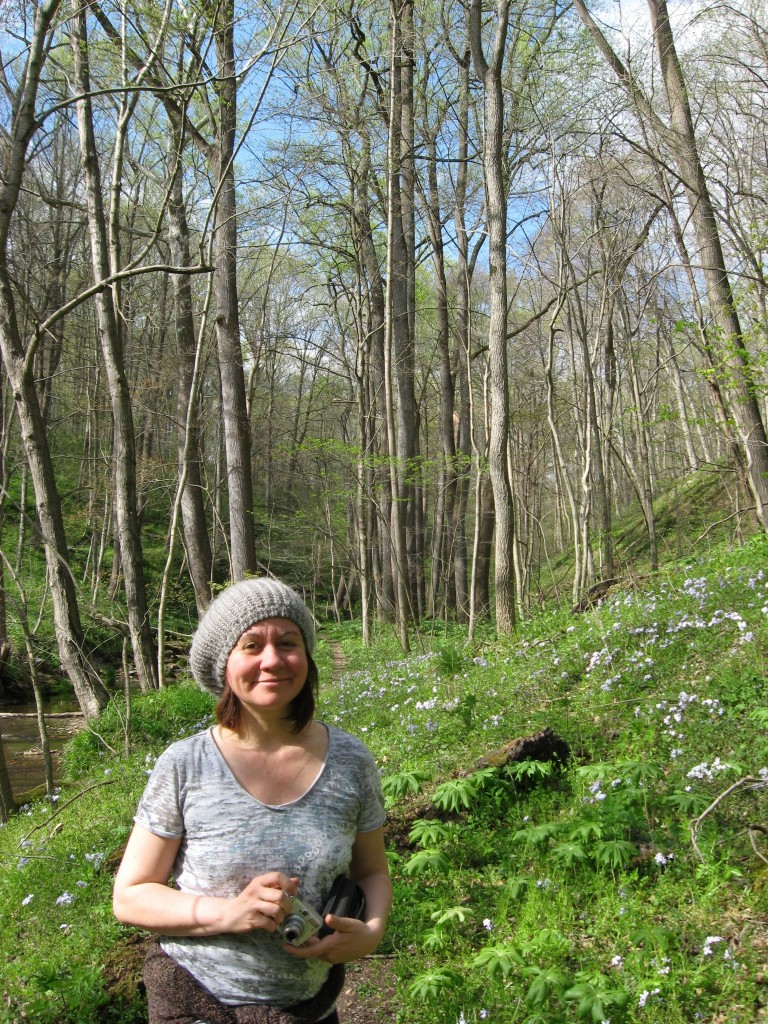
THE SCHUYLKILL CENTER FOR ENVIRONMENTAL EDUCATION
Right in the City of Philadelphia is a beautiful ravine full of spring wildflowers, most notably the woodland Phlox pictured below. They are working hard to promote and protect wildlife, native plants and educating the public. They even have a native plant sale every Spring which is wildly popular! Â This is the Happy Spring Place!
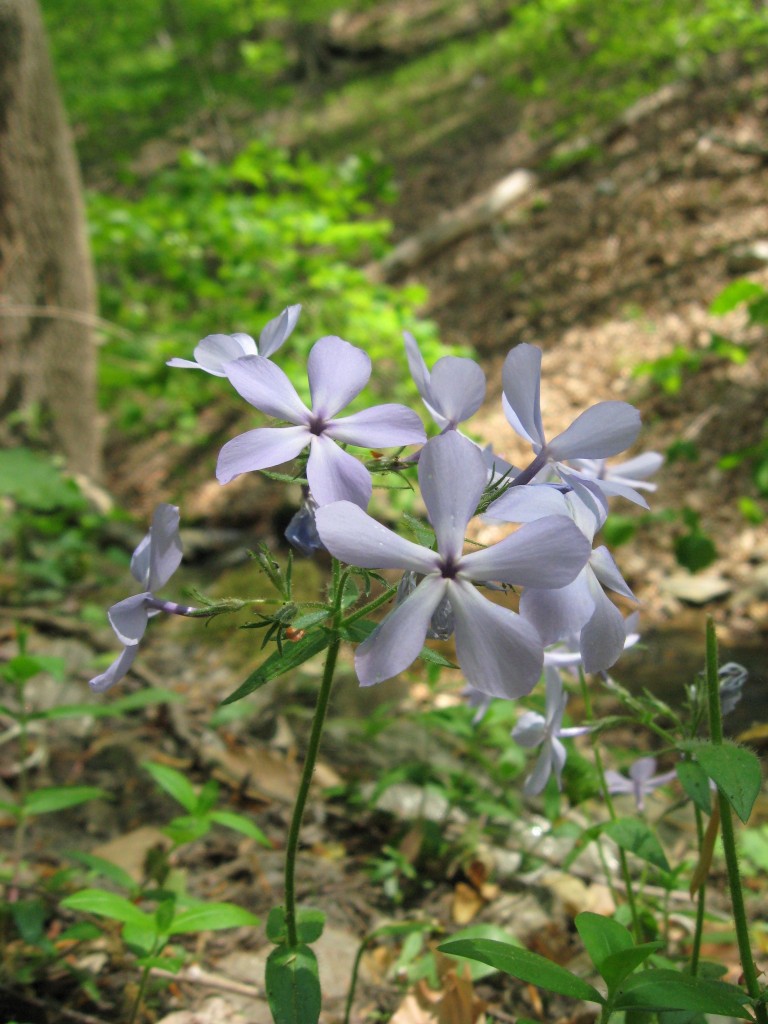
THE GARDEN OF THE SANGUINE ROOT
Our garden is the next stop on our wild tour of the spring. This picture below could be Shenks Ferry Wildflower Preserve, or the Schuylkill Center, or even Mt Cuba Center, but it is just our humble Philadelphia rowhouse garden which we look forward to every spring. We do most of the work in the fall and let it all happen in the Spring, which for us gardening-wise is a quiet time of observation and exultation.
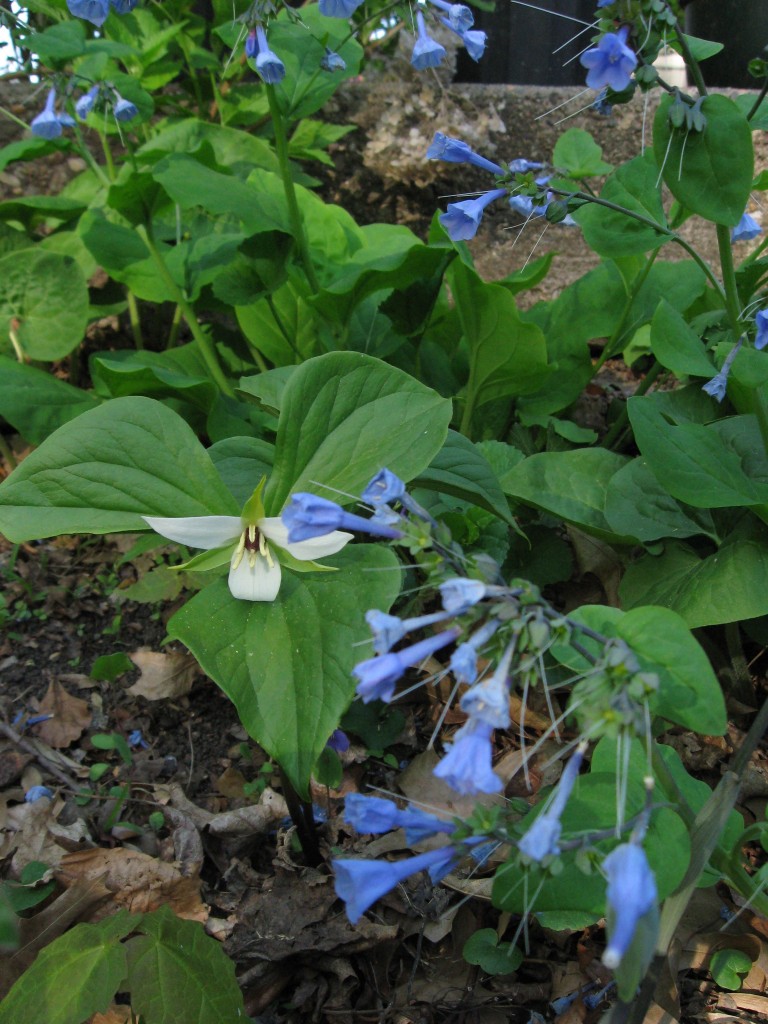
Lastly, the impression of the Pinxterbloom Azalea in Morris Park has us dreamin’. Above the deer browse line this shrub is still able to bloom on just a few specimens. It is a spectacular show of flowers and we, as well as Philadelphia Parks and Rec staff have worked hard to preserve these few shrubs by removing the invasives around them.
MORRIS PARK, PHILADELPHIAÂ
